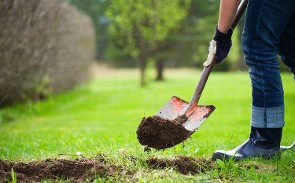5 Tips to Prevent Chimney Fires

5 Tips to Help Prevent Chimney Fires
During the winter months, many homeowners enjoy curling up in front of a cozy fire. Unfortunately, chimney fires are a common cause of house fires during the winter. According to the Chimney Safety Institute of America, there are over 25,000 chimney fires reported annually in the United States, causing over $125 million in property damage each year. Whether you are using wood or natural gas, fireplace safety is important. Listed below are a few tips:
- Have your chimney inspected. Professional chimney inspections and cleanings are your first line of defense. The National Fire Protection Association (NFPA) recommends having your chimney inspected at least once a year. During an inspection, a certified chimney sweep will check for creosote buildup, blockages, and structural damage.
Regular cleanings remove dangerous creosote and debris, ensuring your chimney operates efficiently and safely. If you haven’t had your chimney inspected yet this year, now is the time to schedule an appointment.
-
Burn the Right Type of Wood. The type of wood you burn significantly impacts creosote buildup. Always use seasoned wood that has been dried for at least six months. Seasoned wood burns more efficiently and produces less smoke, reducing creosote accumulation. Avoid burning green or wet wood, as it generates more smoke and moisture, leading to faster creosote formation.
Never burn trash, cardboard, or treated wood in your fireplace. These materials can release toxic fumes and create excessive heat that may damage your chimney.
-
Practice Safe Fireplace Use. How you use your fireplace also matters. Follow these best practices for safe operation:
-
Build small, hot fires instead of large, smoldering ones. Hot fires produce less creosote.
-
Always use a fireplace screen to prevent sparks and embers from escaping into your home.
-
Never leave a fire unattended, and make sure it is completely extinguished before going to bed or leaving the house.
-
-
Install Safety Features. Adding safety features to your chimney can prevent problems before they start. Consider installing:
-
A chimney cap. This keeps out debris, animals, and moisture that can contribute to blockages and creosote buildup.
-
Carbon monoxide detectors. These alert you to dangerous levels of carbon monoxide, which can result from poor ventilation or blockages.
-
A spark arrestor. This prevents sparks from escaping the chimney and igniting nearby materials.
-
-
Stay Proactive During Winter. Even with the best preparations, it’s essential to stay vigilant during the colder months. Check your chimney periodically for visible damage or obstructions. If you notice any unusual smells, smoke backing up into your home, or poor draft performance, contact a professional immediately.
While natural gas fireplaces require a bit less maintenance than their wood-burning counterparts, fireplace safety should still be practiced. To make sure your gas fireplace is operating safely, chimney inspections and proper ventilation should be part of your routine maintenance plan.
References:
https://www.csia.org/chimneyfires.html
https://www.csia.org/gas_fireplace.html
https://www.ctsweep.com/blog/top-sweep-stories/chimney-fires-can-be-prevented/
https://www.youtube.com/watch?v=4kvQX_8Wf-0
https://www.gardeningknowhow.com/ornamental/trees/tgen/hardwood-tree-information.htm
An insurance company that cares about you and insuring the things you wish to be insured.
Get a Quote> Find an Agent>

